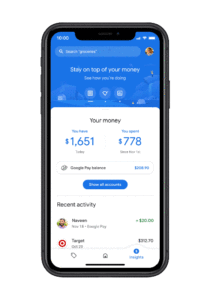
A digital identity is a person’s entire “presence online” (Stoller, 2016). This consists of everything individuals post, how one interacts with others online, and how one’s digital content affects how one is perceived by others. Some examples of what it could include are an individual’s social media profiles, one’s “body of work, portfolio, blog, and tweets” (Stoller, 2016). Also included would be to which groups or networks an individual belongs to online. Each person can be distinguished from another online via their unique digital identity.
Typically, a digital professional identity is only a component of one’s entire digital identity. One’s social media use will differ greatly depending on whether one intends to use a platform for personal or professional uses. Typically, social media use for professional purposes is characterized by a greater level of restraint with which one generates content and interacts with content online. As well, a social media presence professionally is typically cultivated for a purpose. Personal usage of social media is typically for the purpose of leisure or to nurture personal interests (Spracklen, 2015). Both approaches to digital identity can contribute to helping form one’s identity as an individual and to finding a sense of belonging online (Spracklen, 2015).
“People have always found a sense of community and belonging through social networks” (Spracklen, 2015) which are typically “organized around a past that is imagined or constructed from myths of belonging or exclusion” (Spracklen, 2015). Each ‘imagined identity’ or the norms that are associated with each community of individuals influences those who wish to join that group.
Often the right sort of “performative behaviour” (Spracklen, 2015) needs to be displayed to allow for an individual to be permitted to join a certain group or community. In this way, digital identities can converge in networked publics. Aggregations of digital identity can be of use in the tracking of user habits online and this data is often of great interest and value to companies.
A digital wallet would also be considered part of one’s digital identity. A digital wallet could consist of payment information, passwords, cards, passports, etc. A digital wallet essentially contains all the tools that one needs to participate in society. While digital wallets provide an easy way to verify identity, information, and complete transactions, they are precisely the reason that sometimes phones can be a greater target for theft than a wallet in recent times. As well, if someone has access to your phone or an account of yours that is logged into, that individual without having to verify their identity can essentially impersonate you for whatever purpose they desire.
With “more and more people, businesses and devices interacting online” (George et al., 2019), the benefits that come with having a digital identity are numerous. Much of our business is conducted online or has shifted to being conducted online in recent years. Having a digital identity in this type of environment means having greater access to a range of meaningful opportunities (George et al., 2019). For example, job recruitment is conducted almost exclusively online these days. Websites such as Indeed.com, craigslist and company’s own websites have largely replaced the classified section of the newspaper. As well, digital identities allow us easier access to services such as banking, prescriptions, doctor’s appointments (George et al., 2019), etc. In such a way, it is faster than ever to complete transactions, sign and submit documents, and complete many other tasks. Hence why many telecommunication companies for example recommend you use their online help portal prior to calling or making an in-person visit.
However without access to a phone, computer, or the internet, many can become excluded (George et al., 2019) from participating in our increasingly technologically driven modern society. As laws, civil society, and professional spaces engage the accountability of digital identity, I feel that it is important to regulate what organizations are entitled to do with personal information, and for there to be some accountability in keeping our data safe. I think that Estonia’s model of “giving information only once” (George et al., 2019) and citizens owning their own data is a good example to follow. Something that I would like to see is more of is transparency with privacy related clauses as well as security audits and overall enhanced security.
References
Kilekani Nandan, Kubzansky Mike, Manju George, Ratas Jüri, Snapp Mary. “Press Conference. The Value of Digital Identity for Global Economy and Society”. You Tube, uploaded by The World Economic Forum, 5 February 2019, https://www.youtube.com/watch?v=1-V7lyxrOmw&feature=youtu.be
Spracklen K. (2015) Identity-Making and Social Media. In: Digital Leisure, the Internet and Popular Culture. Leisure Studies in a Global Era. Palgrave Macmillan, London. https://doi.org/10.1057/9781137405876_6
Stoller, Eric. “What is Digital Identity.” You Tube, uploaded by University of Derby, 25 November 2016, https://www.youtube.com/watch?v=u0RryRbJza0&feature=youtu.be.& (0:05-0:06, 0:29-0:32)
Image Credits: Google
Recent Comments